Ichthyosaurs were fast swimming, predatory reptiles, thought to have filled similar ecological niches to today’s tuna, dolphins, and whales during much of the Mesozoic. The Strawberry Bank Lagerstätte has yielded eight ichthyosaur skeletons preserved in three dimensions, some with soft tissues.
Ichthyosaurs of Strawberry Bank
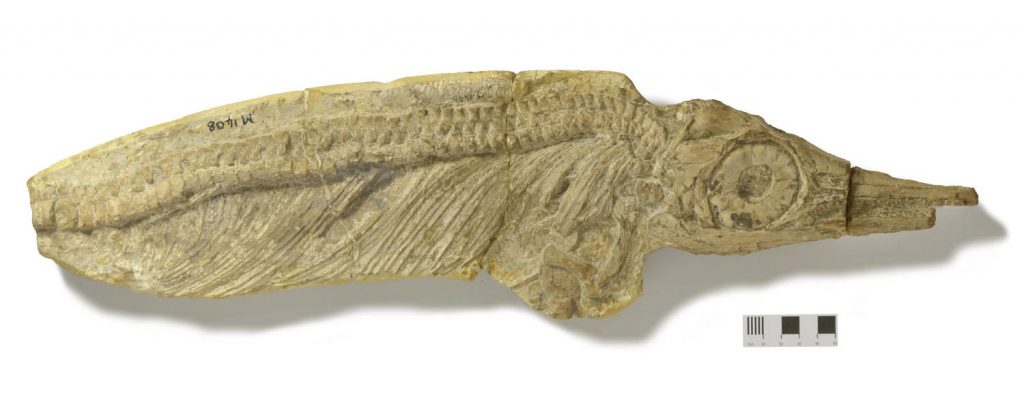
Articulated infant Stenopterygius triscissus known as BRLSI.M1408
Strikingly, all the ichthyosaur specimens known from Strawberry Bank are juveniles or infants, ranging from one-tenth to one-half the normal adult length of the species. The same is the case with the crocodilian from the site, possibly indicating that the deposit was formed in a shallow-water, protected area that acted as a seasonal nursery for some of the marine reptiles. As an analogy, mangrove swamps form this role for a number of species of pelagic sharks in the present day.
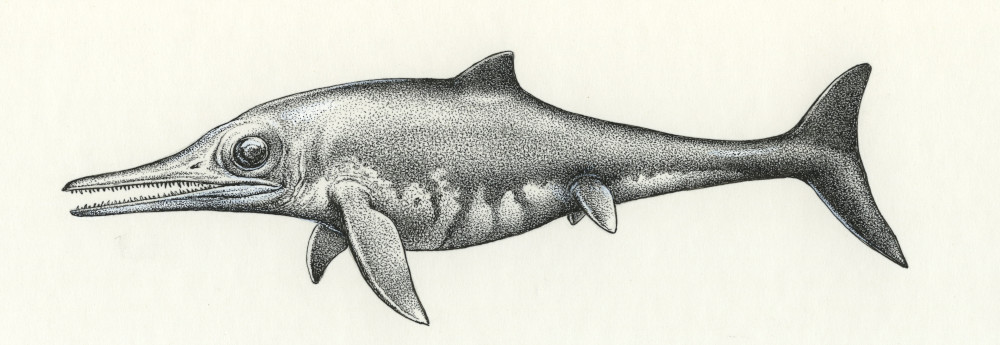
A life reconstruction of Stenopterygius triscissus by artist John Sibbick, based upon what we know of the anatomy of the animal from these specimens and from ichthyosaur fossils worldwide
The diet of the ichthyosaurs consisted of small fishes, belemnites and squid-like cephalopods. The two Ilminster ichthyosaurs, interestingly, appear to show different dietary adaptations. Stenopterygius triscissus had large, curved teeth, and a robust snout and cranium, indicating that they grasped and punctured hard-shelled prey such as cephalopods. On the other hand, Hauffiopteryx typicus has smaller, slim, pointed teeth, and slender snout, and specialized in feeding upon fast-moving, soft prey.
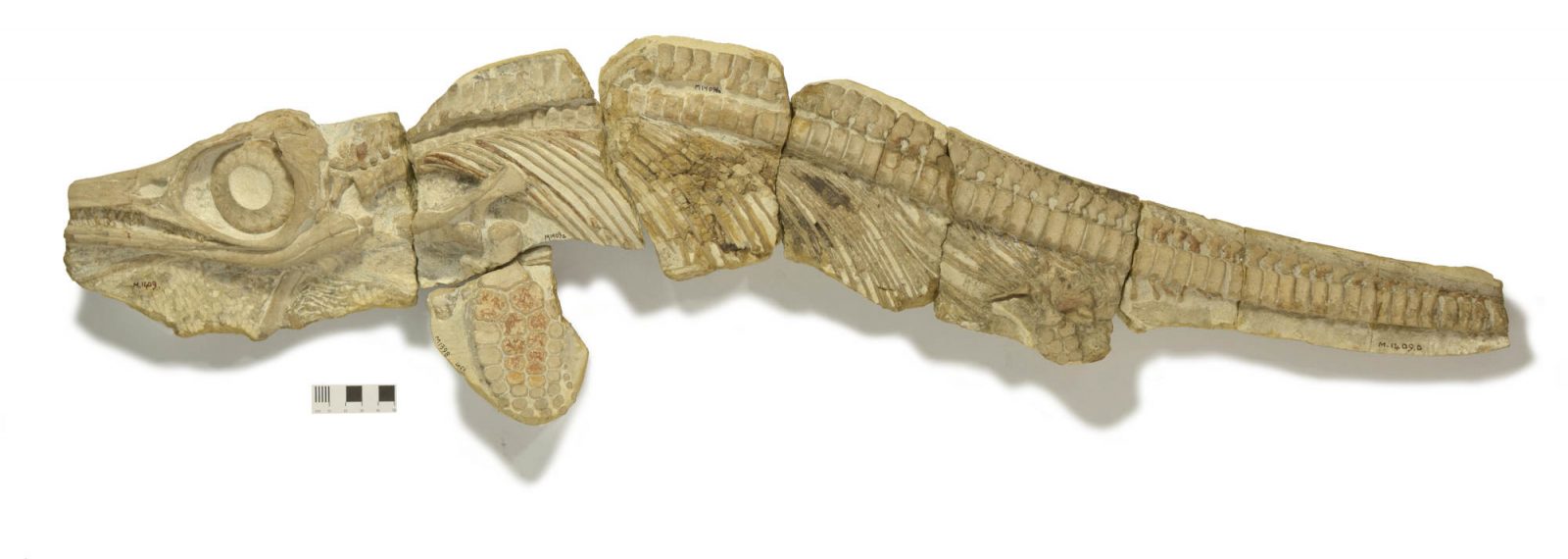
Articulated juvenile Stenopterygius triscissus, known as BRLSI.M1409

A life reconstruction of Hauffiopteryx typicus by artist John Sibbick, as you can see its body morphology is quite distinct from the other species of ichthyosaur known from the ecosystem. This difference seems to corresponded to a different diet, and by implication, behaviour.
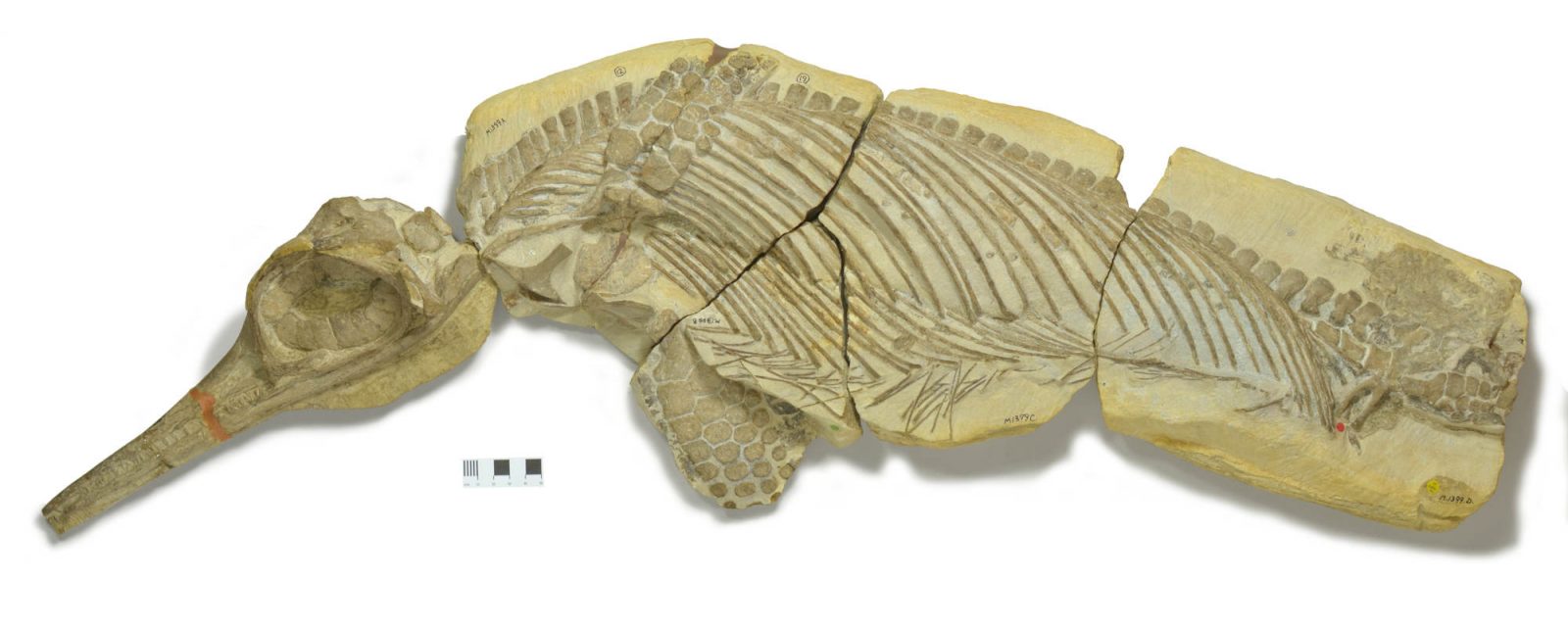
Articulated juvenile Hauffiopteryx typicus known as BRLSI.M1399
The skull of the same specimen (Hauffiopteryx typicus, BRLSI.M1399) in right-lateral and dorsal views, showing how beautifully preserved and uncompressed the fossil is
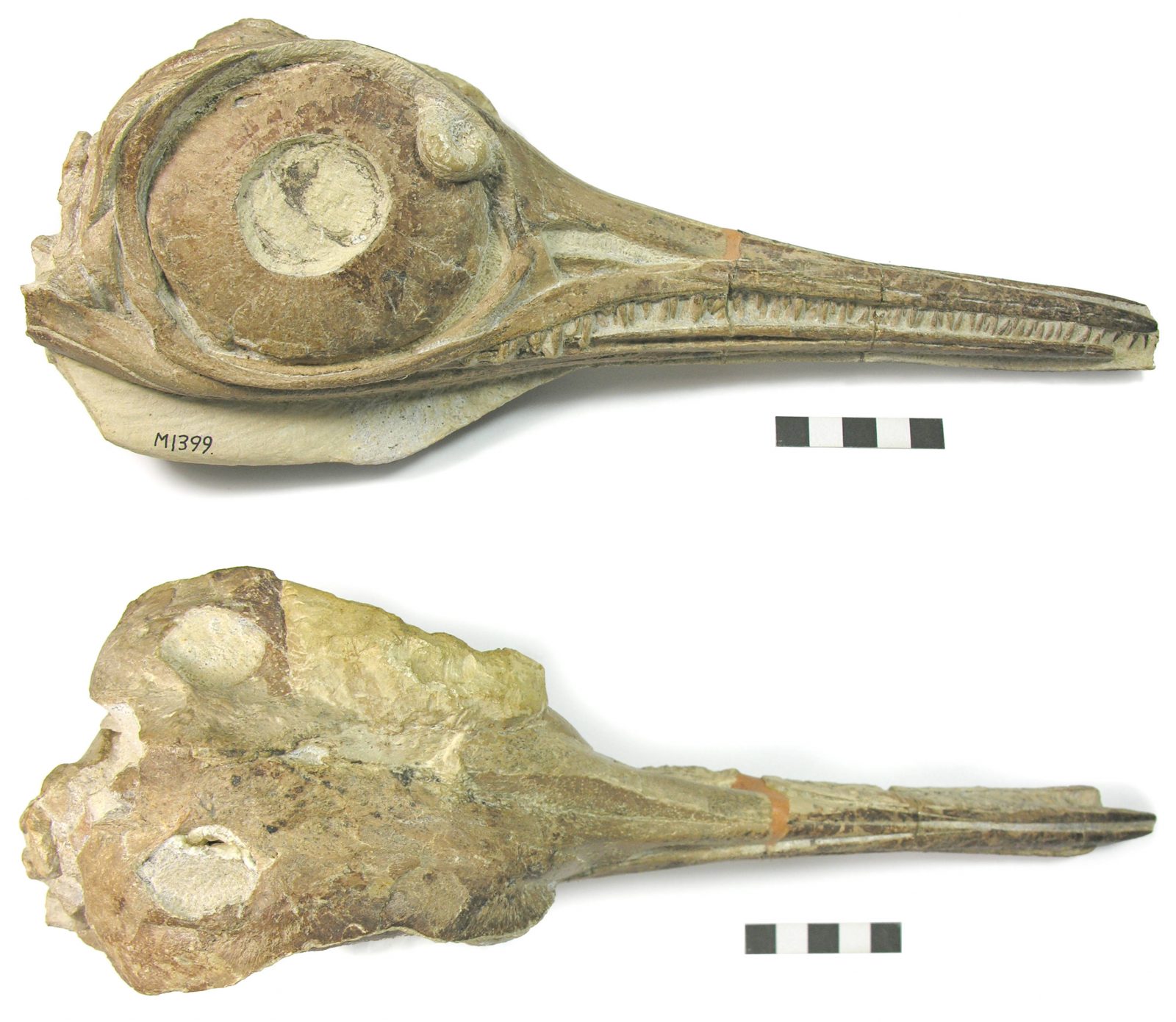
For more detailed information about these specimens there are several peer reviewed journal articles available, more studies will be added and reported upon in Curators Note’s as they are published:
- Caine and Benton, 2011: Ichthyosauria from the Lias of Strawberry Bank, England
- Marek, Moon, Williams, and Benton, 2015: The Skull and Endocranium of a Lower Jurassic Ichthyosaur based on Digital Reconstruction
- Srdic, Beardmore, and Lomax, 2019: A rediscovered Lower Jurassic ichthyosaur skeleton possibly from the Strawberry Bank Lagerstätte, Somerset, UK

The largest ichthyosaur specimen known from Strawberry Bank, a juvenile Hauffiopteryx typicus known as BRLSI.M1401

